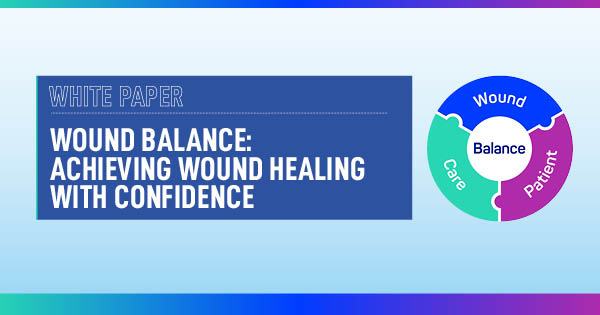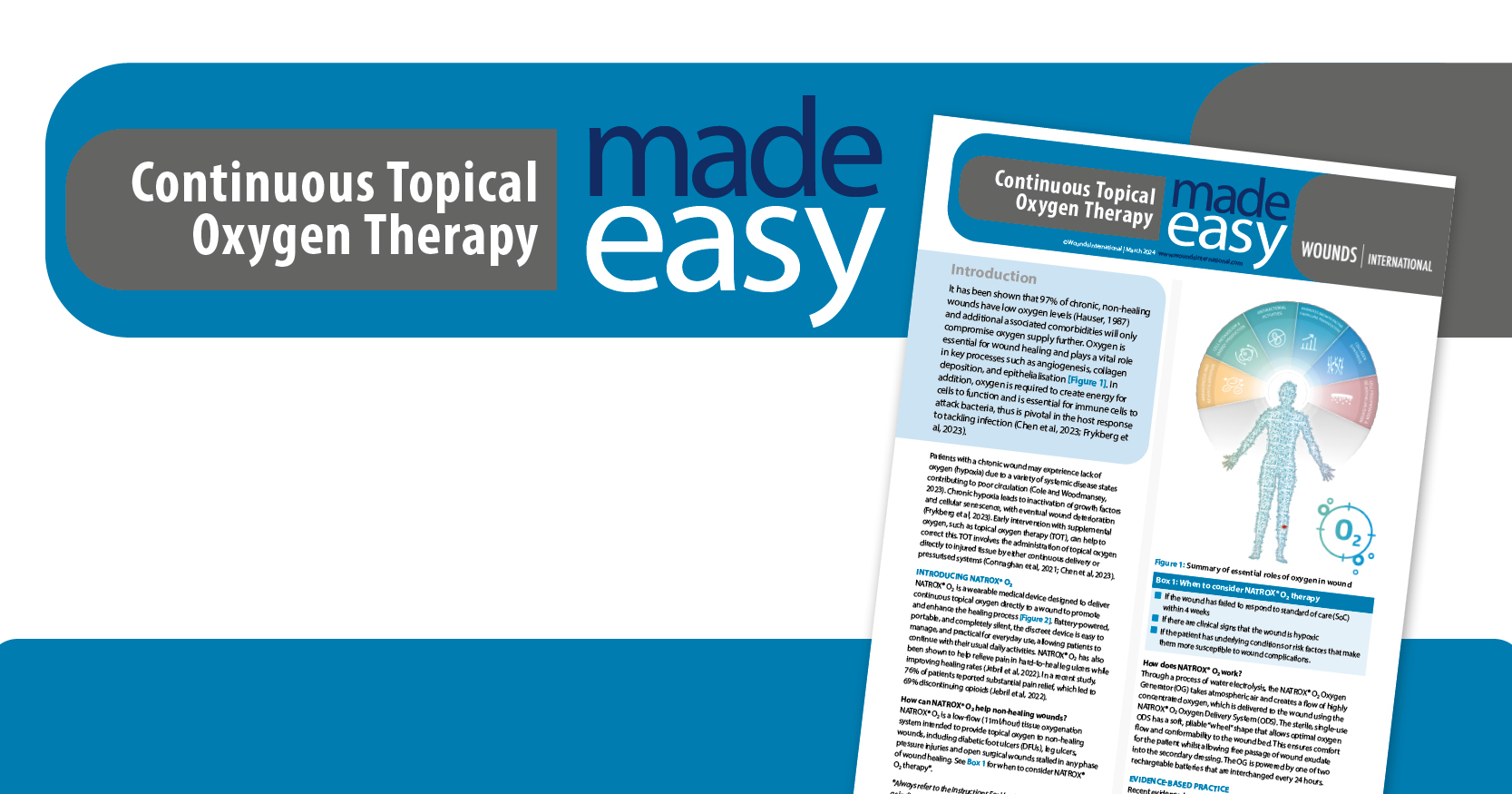The concept of ‘wound balance’ is multifactorial, encompassing interconnecting issues related to the wound healing process and clinical practice. The wound balance concept aims to integrate various critical parameters which offer continuity, individualised care and support clinical decision-making, to place the patient at the centre of all care [Figure 1, see page 4].
Fundamentally, aiming for ‘wound balance’ constitutes a shift in focus, from managing wounds to leveraging the clinical intention of healing wounds whenever possible and as early as possible. The patient and clinician are on this journey together, with the patient’s quality of life needs and preferences, as well as expected clinical outcomes, at the centre of the decision-making process. Patient engagement is crucial, both to achieve agreed outcomes and to improve patient experience.
Quality of life is a key component that is often misunderstood, as it can be a challenge to measure or quantify, and it is often harder to apply this to evidence-based practice. Living with a wound is often different to living with other chronic conditions, and care needs to be individualised accordingly, with patient communication and listening at the core of all interactions.
While healthcare systems and settings vary, this change in focus is needed to facilitate a transformation in clinical practice. Ritualistic practice needs to be eliminated through an understanding of the science of wound healing, and an application of this to the individual patient and their unique needs. Clinicians’ lack of specialised knowledge or confidence in wound care can lead to suboptimal practice, such as failing to address the underlying contributing factors or not selecting the optimal dressing for the individual patient’s needs. Considering whether a specific treatment approach is in the best interests of a particular patient is essential, and clinicians should always ask themselves whether the most familiar product to them is the most appropriate for the patient.
The wound balance approach aims to provide clinicians with the information to understand the science of wound healing, in addition to the skills in how to communicate this effectively with patients to help them to get the best out of their treatments and, ultimately, achieve good clinical outcomes.
A change in the way we think about and discuss wounds is needed, focusing on healing, where appropriate – as opposed to managing wounds. Ultimately, this can reduce the cumulative burden of wounds, easing the pressure and psychological stress on both patients and clinicians.
This document provides guidance in achieving ‘wound balance’, and specifically how this can be applied to practice to improve outcomes. The goals are to help clinicians in:
Understanding the science of wound healing
Identifying what may be preventing a wound from progressing, including external factors and healing wound barriers
Recognising wounds likely to become non-healing or chronic early on, rather than waiting for up to 12 weeks, which is sometimes deemed the timeframe for a wound to be considered chronic; however, this is a range and different countries have varying timeframes
Understanding the importance of adopting a patient-centred approach, thereby identifying the patient’s individual needs and ensuring that the patient is at the centre of all decision-making processes – a process that starts at the beginning and continues at every stage of the patient journey
Using positive language to optimise wound healing rather than just managing wounds
Considering and measuring patient quality of life, social determinants of health, and the impact of living with a wound, to improve outcomes and build evidence
Applying the knowledge gained to achieve outcomes in an appropriate and timely manner.
This document is the outcome of a meeting of international wound care experts held in Frankfurt, Germany, in November 2022. This represents the first step in the ‘wound balance’ education journey. Further work is planned to expand upon the concept and provide clinicians with an enhanced understanding of best practice to help optimise outcomes for patients by achieving wound balance.







